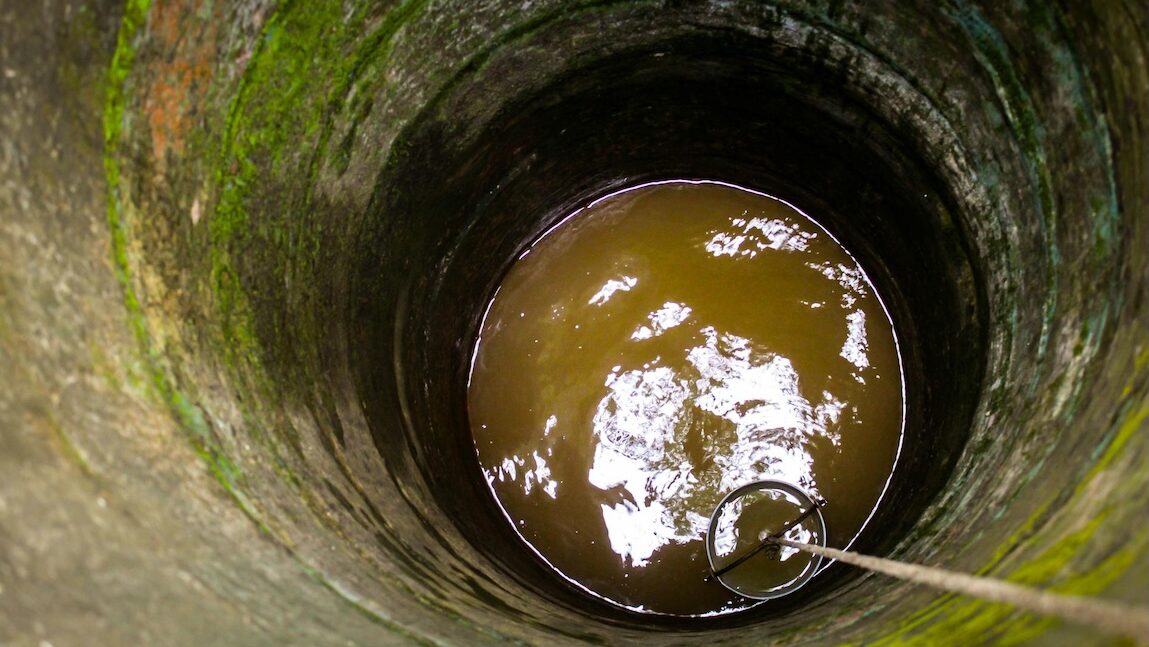Based on a joint press release from MPI BGC and the Cluster of Excellence “Balance of the Microverse” (University of Jena)
Microbes in groundwater act as a methane filter, significantly reducing emissions of this potent greenhouse gas, according to a new study published in the scientific journal PNAS.
Researchers from the Max Planck Institute for Biogeochemistry (MPI BGC), the University of Jena, and the German Centre for Integrative Biodiversity Research (iDiv) used a highly sensitive radiocarbon tracer method to demonstrate that microbes consume more than half of the groundwater methane before it can be released.
“Our results reveal a highly active microbial methane filter in groundwater that plays a crucial role in limiting the release of methane to surface waters, soils, and the atmosphere,” explains first-author Beatrix M. Heinze of MPI BGC.
Methane is a potent greenhouse gas, and its heat-trapping ability makes it far more potent than carbon dioxide in the short term — around 84 times stronger over 20 years — making rapid reductions in methane emissions one of the fastest ways to slow global warming. While methane is commonly found in groundwater from microbial or fossil sources, how much escapes to surface waters or the atmosphere has remained uncertain. At high concentrations, methane can affect drinking water quality and seep into surrounding environments. Microbial oxidation is the only known biological methane sink.
Methane removal depends on methane concentration
The team sampled groundwater from shallow carbonate and sandy aquifers in central and northern Germany with methane concentrations that ranged over five orders of magnitude, from barely detectable to supersaturated. Rates of microbial methane oxidation ranged similarly over five orders of magnitude and were highly correlated with groundwater methane concentrations.
“Our method not only allowed us to quantify microbial methane oxidation, but also to determine how much of the methane microbes used to produce biomass,” Heinze explains. “We found that groundwater microbes primarily use methane to generate energy rather than build biomass”. Methane turnover, the time required for microbes to fully consume the available methane, ranged from just a few days to several decades, depending on concentration.
Microbes remove more than half of groundwater methane globally
Given the strength of the relationship between methane oxidation rates and methane concentrations, the authors collected published data on groundwater methane concentrations across the globe. By extrapolating their observed relationship between methane concentration and microbial oxidation, they estimate that methane-oxidizing microbes remove between 167 and 778 teragrams of methane annually — equivalent to roughly two-thirds of the methane produced in groundwater worldwide. For perspective, current estimates suggest that inland waters and wetlands emit between 164 and 329 teragrams of methane per year.
In addition to its climate impact, methane at high concentrations poses risks to groundwater quality.
“Our method can help identify potential risks even in aquifers considered clean and safe for future use,” says iDiv member Kirsten Küsel, head of the Cluster of Excellence “Balance of the Microverse” at the University of Jena. “These findings underscore the urgent need for sustainable groundwater management to protect both climate and drinking water resources.”
Original publication
(Researchers with iDiv affiliation bolded)
Heinze B. M., Schwab V. F., Küsel K., Schloemer S., Roskam A., Xu X., and Trumbore S. (2025). Microbial oxidation significantly reduces methane export from global groundwaters. PNAS. DOI: 10.1073/pnas.2508773122
Contact
Prof Dr Kirsten Küsel
University of Jena
German Centre for Integrative Biodiversity Research (iDiv) Halle-Jena-Leipzig
Phone.: +49 364 19 49461
E-Mail: kirsten.kuesel@uni-jena.de
Christine Coester
Media and Communications
German Centre for Integrative Biodiversity Research (iDiv) Halle-Jena-Leipzig
Phone: +49 341 97 33197
E-Mail: christine.coester@idiv.de
At high concentrations, methane can affect drinking water quality and seep into surrounding environments.
Please note: Use of the pictures provided by iDiv is permitted for reports related to this media release only, and under the condition that credit is given to the picture originator.
